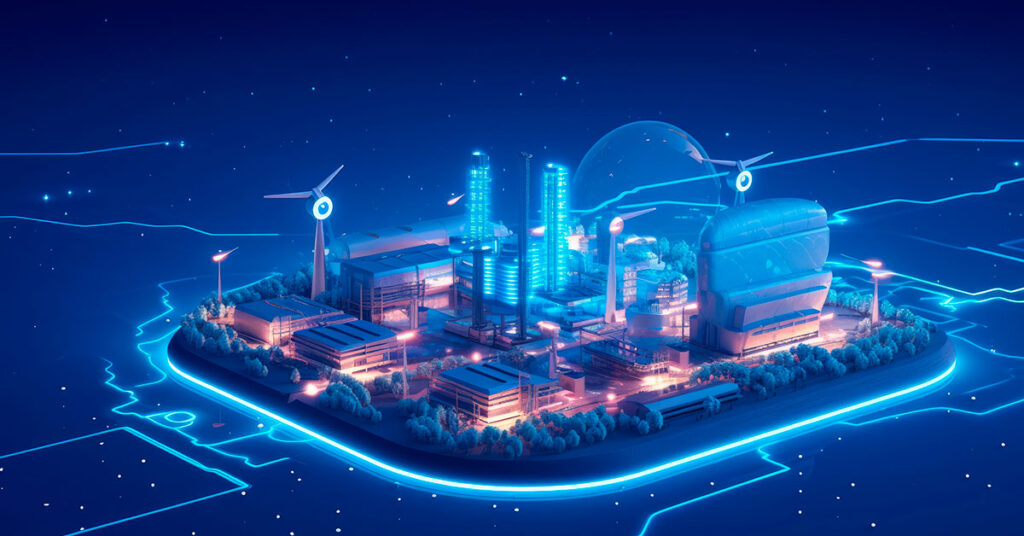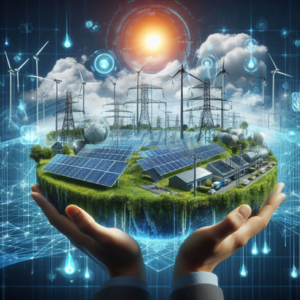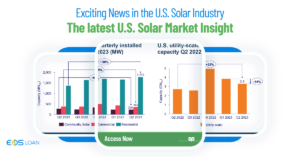The aim of the original article is to present a critical comparison of different business models (BM) of Virtual Power Plant (VPP) pointing out both the common and the unique features for each model.
The author compares American, German, Finnish, Danish and Australian VPP’s business models (BM) to propose a business model to Poland. In this essay I will bring a brief discussion of VPP business model elements and possibles pathways to VPP in Brazil.
Brazil has many opportunities to lift off energy transition (EPE,2023).
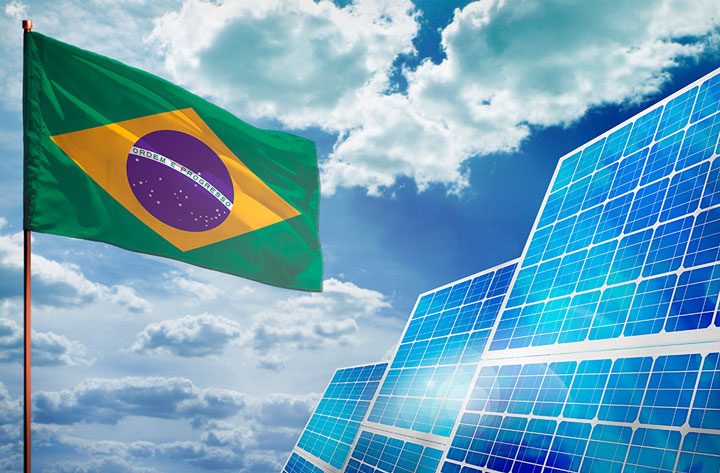
The generation of electrical energy from photovoltaic panels is the fastest growing in Brazil, being the second largest source of generation with a capacity of 36 GW, around 16.1% of the national electrical production (Exame, 2023). This article presents an initial proposition of BMs to Brazil and concludes that VPP´s are in effective solution to bring more stability to the electrical network and reduce the cost to the consumers in Brazil.
Introduction
According to Ropuszyńska-Surma and Węglarz (2019) the development of Polish Renewable Energy Sources sector, especially the development of Distributed Energy Resources (DER), should be stimulated by two factors: the new regulation (RES Act) and the planned introduction the power market. In Brazil also the smart grid and inclusion distributed energy resources (DER) in the electricity grid and the energy free market are in the agenda of national energy agency (ANEEL); the energy research Office (EPE, nd) and national electric system operator ONS (ONS, n.d.). LAW No. 14,300, of JANUARY 6, 2022, Establishes the legal framework for microgeneration and distributed mini generation, the Electric Energy Compensation System and the Social Renewable Energy Program. This law enables the commercialization of electricity only from consortium of set of consumer units located on the same property or on contiguous properties, without separation by public roads. As far we know doesn’t exist yet a regulation for VPP´s.
What is a virtual power plant (VPP)?
VPPs are aggregations of DERs that can balance electrical loads and provide utility-scale and utility-grade grid services like a traditional power plant. DOE uses a broad definition of VPPs that includes a variety of mechanisms for aggregating and orchestrating DERs, fundamentally, VPPs are a tool used for flexing distributed demand and supply resources with a level of dexterity that has historically only been possible in flexing centralized supply (Downing et al., 2023).
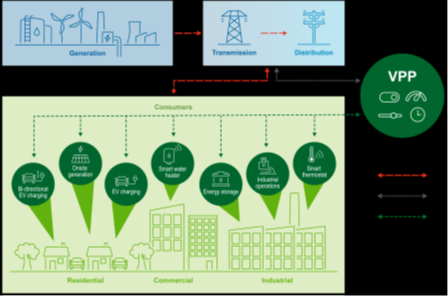
Figure 1 – VPP structure (Downing et al., 2023, p 2).
There are different types of VPP, that can be classified by the type of DG they manage or the type of the service they provide. The goal of VPPs is to enhance power generation efficiency, provide reliability, and optimize the cost-effectiveness of energy production and distribution. VPPs can be classified into three main types based on their operational and technological focus:
- Demand Response (DR) VPPs
Demand Response VPPs focus on managing the energy consumption patterns of connected units to match the supply of electricity with demand. This type involves shifting or curtailing the load rather than increasing production. During peak demand times, a DR VPP will reduce the load by controlling or shutting down non-critical processes across its network. This helps in stabilizing the grid and reducing electricity costs.
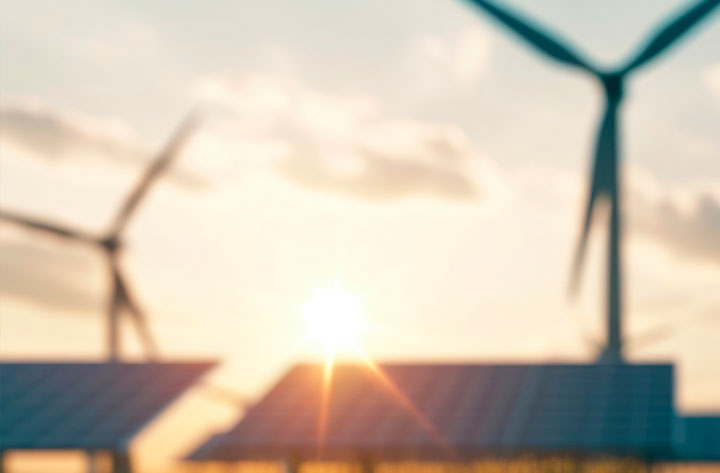
Supply-Side VPPs
Supply-side VPPs aggregate various types of small-scale, distributed generation units like wind turbines, solar panels, and small hydro plants. These VPPs manage the production side of the equation. They aim to maximize energy production from renewable sources, providing a reliable, sustainable alternative to traditional power plants. Supply-side VPPs can quickly adjust to changes in demand or production by redistributing electricity generation across their network.
Another way to classify VPPs is related to their hole in the electricity market as commercial or technical VPP.

Commercial VPPs
Commercial VPPs focus on the economic aspects of energy management, aiming to maximize profits through intelligent trading and distribution of electricity. They integrate various small and medium-sized energy-producing assets, like wind farms, solar panels, and biogas plants, as well as energy storage systems and flexible power consumers. By doing so, commercial VPPs can optimize energy sales to the electricity markets at the most favorable times, taking advantage of fluctuating energy prices.
Key Features of Commercial VPPs:
- Market Integration: Commercial VPPs are deeply integrated into energy markets. They use advanced predictive analytics to forecast market prices and energy demand, enabling them to sell energy at peak prices and purchase energy when prices are low.
- Revenue Maximization: The primary goal is to increase the profitability of each unit within the VPP network by smartly managing the timing and volume of energy production and consumption.
- Contract Management: They often manage numerous contracts with different energy producers and consumers, facilitating the optimal distribution of power according to these agreements.
Technical VPPs
Technical VPPs focus more on the operational and grid stability aspects of power management. Their main aim is to maintain a reliable and steady supply of electricity, through ancillary services, ensuring grid stability and efficient operation of the integrated assets. Technical VPPs utilize real-time data and advanced control systems to synchronize the output of decentralized energy resources.
Key Features of Technical VPPs:
- Grid Support: Technical VPPs provide essential grid services such as frequency regulation, voltage control, and spinning reserve. These services are critical in maintaining the reliability and safety of the power grid.
- Demand Response Management: as discussed in item a.

Mixed Asset VPPs
Mixed Asset VPPs combine both supply-side and demand-response capabilities. Combined commercial and technical VPP services and benefits. They integrate generation, storage (like battery systems), and consumption control within one platform.
This type offers the most flexibility as it can both generate and store energy or modulate consumption according to grid requirements. Mixed Asset VPPs can perform sophisticated energy optimizations, making them highly effective at improving grid stability and facilitating the integration of renewable energy sources.
Each type of VPP utilizes advanced communication technologies, smart meters, and real-time data analytics to monitor and control the distributed energy resources (DERs) effectively. The software platforms that run VPPs use algorithms to predict energy production and demand, optimizing resource allocation for economic and operational efficiency.
The development of the business model concept
At the beginning of the technology-oriented concept development, the authors perceived the BM as a small part of a company, but later they see the BM increasingly as a representation of the company. A special importance is put on the architecture of flow of products, services, information, cash, and benefits generated by individual entities included in the model. The BM is defined by the relation of nine essential components: strategy, resources, network, customer, value proposition, revenue, service provision, procurement, and finances.
The core element of the BM is the value proposition. VPPs can contribute to resource adequacy [1] at a low cost; equally as important as their financial benefits, VPPs in various forms can increase resilience, reduce greenhouse gas emissions, and air pollution, reduce T&D congestion, empower communities, and be adapted to meet evolving grid needs, these benefits area the VPP value proposition. Figure 2 shows a general value proposition of a VPP.

Figure 2 – VPP value proposition (Downing et al., 2023, p 3).
VPP business model comparison
Ropuszyńska-Surma and Węglarz (2019) compare 7 VPPs BMs four from Europe, two from USA and one Australia. VPP belongs to four systems, and it is shaped by one. These systems are technical, legal, economic, and social. The changes, including technical and social innovations, are the key reasons for establishing and developing the VPP.
- Technical systems –information and telecommunication technologies, Smart Grids and smart metering, RES technologies, storages of RE (e.g. electricity container and electric cars), ensuring energy security.
- Legal system with new regulations like the following: focus on the support system of RES installations, limits of greenhouse gases emissions, the priority for the RES, legal regulation of prosumer.
- Economic system with such elements like liberalization of energy sector, including electricity whole markets and establishment power free markets, economic tools belonging to demand side management and demand response, mainly tariff system, high energy prices, economic trend to regionalization of energy market and creating local energy market connected with autonomous energy areas (“energy islands”) base on local RES, establishing prosumers, economic cost connected with blackouts.
The author uses the location of the VPP, its strategy, resources, network, customer, value proposition, revenue source to enable the comparison of VPPs BMs. Table 1 presents the comparison of business models.
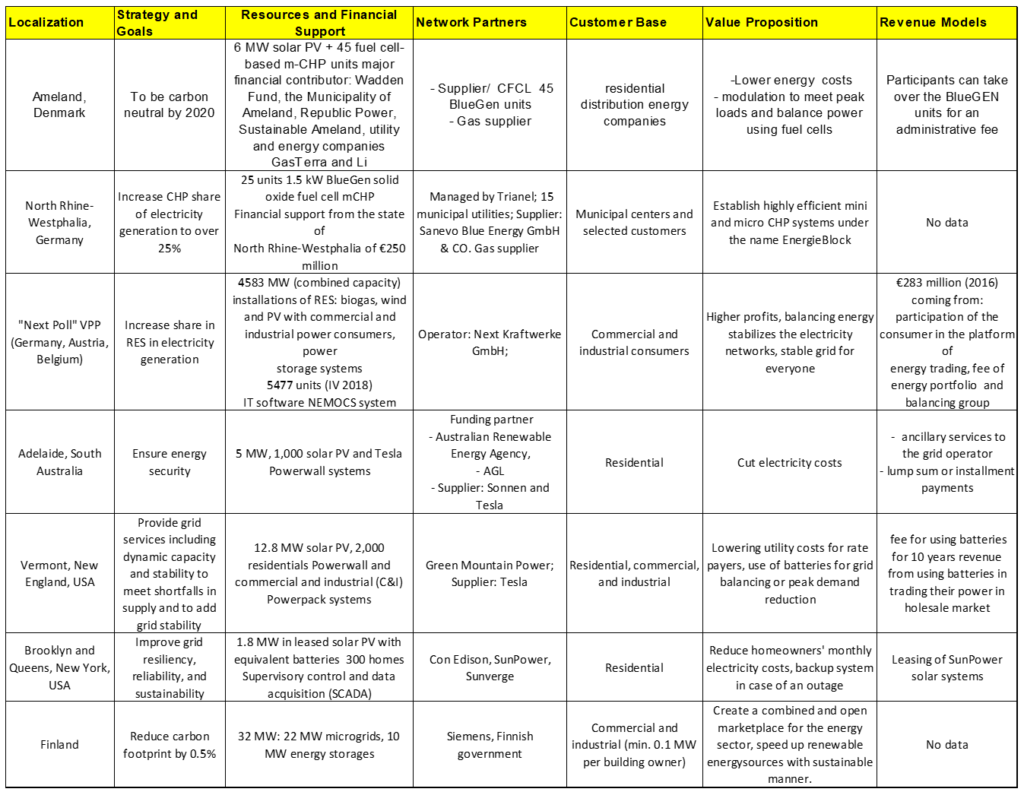
Table 1: Comparison of business models (Ropuszyńska-Surma & Węglarz, 2019, p. 6)
Possible VPP business models to Brazil
Brazil energy market requires both demand response VPP and ancillary services VPP to ensure the stability of the electricity grid.
In Brazil there are three types of DG of PV, based on the installed capacity. Understanding the classifications of GD1, GD2, and GD3 within solar photovoltaic energy systems is crucial in grasping how solar energy is utilized at different scales, and the role each plays in the broader context of distributed generation (DG). Joseph (2024) presents each category and its implications for the solar industry.
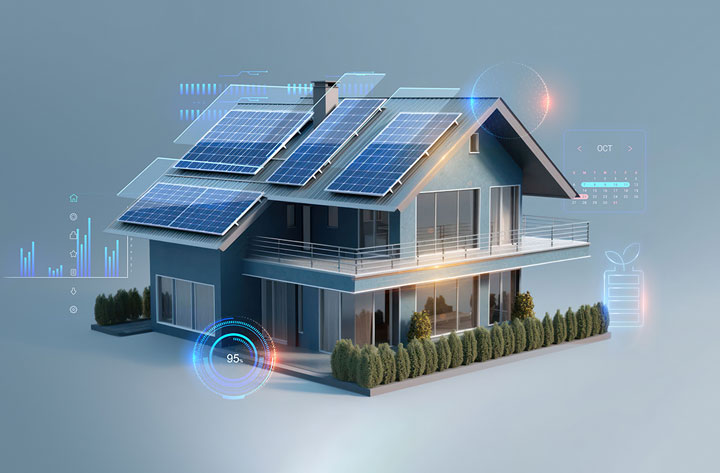
GD1: Residential and Small Commercial Solar Systems
GD1 systems are designed for residential homes and small commercial buildings. Typically, these installations do not exceed 75 kW in power capacity and are most found on rooftops. The integration of these systems into the electrical grid allows homeowners and small businesses to not only meet their own energy needs but also to contribute excess energy back to the grid. This interaction helps to offset electricity costs through net metering or feed-in tariffs, where applicable.
Benefits:
- Cost Efficiency: Reduction in monthly energy bills using self-generated solar power.
- Energy Independence: Decreases reliance on grid-supplied electricity.
- Environmental Impact: Lowers carbon footprint by utilizing clean, renewable energy.
Challenges:
- Installation Space: Limited to the roof size, which may restrict the power capacity.
- Upfront Costs: Although decreasing, the initial investment can still be significant. One way of dealing is to finance the system through companies like EOS Loan (https://eosloan.com/).
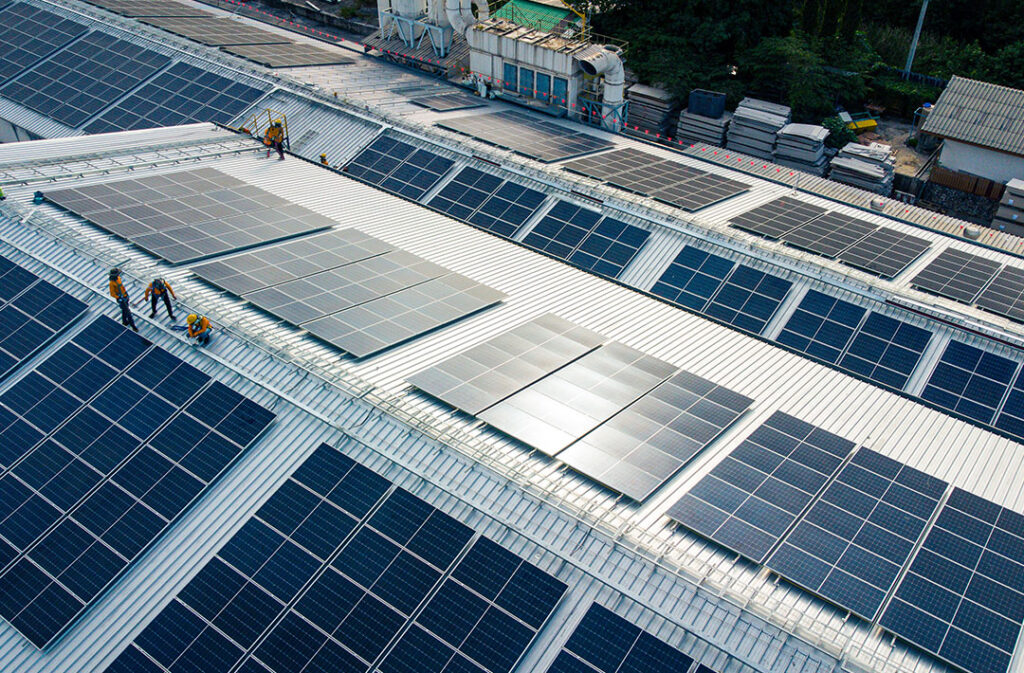
GD2: Medium-Sized Commercial and Industrial Systems
GD2 systems range from 75 kW up to 5 MW in capacity and are commonly adopted by larger commercial entities, including industrial sites and agricultural facilities. These systems serve a dual purpose: they significantly reduce energy costs for businesses and alleviate pressure on the local grid by providing a substantial portion of the energy required by these larger consumers directly.
Benefits:
- Scalability: Suitable for growing energy needs of medium-sized businesses.
- Grid Support: Helps balance demand on the grid during peak times.
- Return on Investment: Potential for substantial cost savings over time.
Challenges:
- Capital Intensive: Requires more substantial initial investment compared to GD1.
- Regulatory and Logistical Hurdles: Involves more complex approval and installation processes.
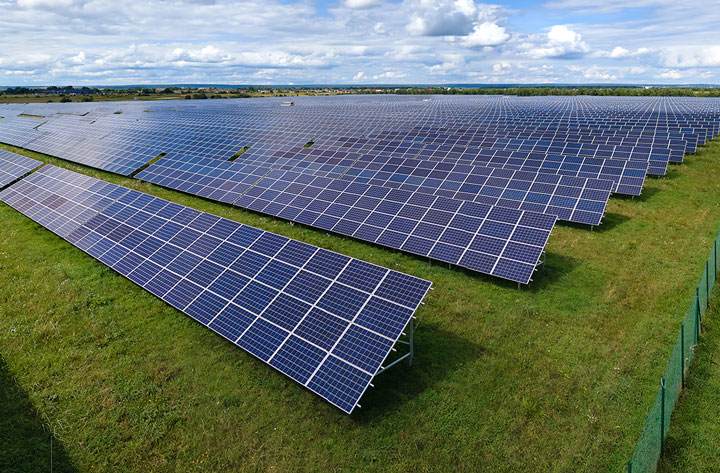
GD3: Large-Scale Solar Projects
GD3 represents the largest category, encompassing installations with a capacity greater than 5 MW. These systems are akin to small power plants and are capable of supplying energy to large facilities, multiple sites, or directly to the power grid. They play a pivotal role in distributed generation by providing a consistent and substantial supply of solar energy to wider areas.
Benefits:
- Massive Energy Production: Capable of generating large quantities of electricity, contributing significantly to the energy mix.
- Economies of Scale: Larger installations can achieve lower costs per unit of electricity produced.
- Enhanced Grid Stability: Supports the grid in meeting high energy demands.
Challenges:
- Large-Scale Investment and Management: Requires significant upfront investment and sophisticated management.
- Environmental and Spatial Considerations: Potential land use conflicts and environmental impacts need careful planning and mitigation.
The integration of GD1, GD2, and GD3 solar systems into the energy landscape is transformative, enabling a scalable transition from fossil fuels to renewable energy sources. Each category serves a unique role, from providing individual homeowners with energy independence to supporting large industrial complexes and enhancing grid stability.
The expansion of these systems is essential for advancing sustainable energy solutions, making solar power a cornerstone of future energy systems.
Although VPPs can manage DER from different sources in this analysis I´m considering just solar PV source. Table 3 is an initial proposition for VPP evaluation in Brazil.
To apply the same parameters of Ropuszyńska-Surma & Węglarz, (2019) we assess the distribution of centralized and distributed solar PV electricity generation. Table 2 shows data of July 2023, nowadays São Paulo is the leader of total PV electricity generation.

Table 2: TOP five states in centralized and distributed generation (Casarin ,2023a)
The proposition considers installing the VPP in the state that can be a hub for energy acquisition and distribution using GC and DG. Bahia was chosen to host a technical VPP to aggregate GC in the north and northeast parts of the country. São was chosen because in its influence area are the states with the greatest number of DG1 customers.

Table 3: VPP proposition to Brazil (source: author)
Discussion and conclusion
In the context of global advancements in Virtual Power Plant (VPP) technologies and business models, Brazil presents a unique and compelling landscape for the development and implementation of such systems. Comparing Brazil’s approach to VPPs with those in other countries, several distinctive factors emerge that highlight both the challenges and opportunities within the Brazilian energy sector.
Distinctive Features of Brazil’s VPP Proposition
1. Regulatory Environment:
Brazil’s regulatory framework for VPPs is still evolving, unlike in countries like Germany, Australia, and the USA, where well-established guidelines exist that facilitate the smoother integration and operation of VPPs. Brazil’s recent legislation, such as LAW No. 14300, has begun to pave the way for more structured development in this area, allowing for the commercialization of electricity from distributed generation resources under specific conditions. This gradual adaptation may influence the pace at which VPPs can be rolled out across the country.
2. Focus on Distributed Generation (DG):
Brazil has shown significant growth in the generation of electrical energy from photovoltaic panels, which now represents a substantial portion of the national electricity production. This growth highlights a strong focus on DG, especially in GD1 and GD2 categories, which are crucial for the development of both commercial and technical VPPs. In contrast, countries like Germany and Denmark have also heavily invested in various other forms of renewable energy, such as wind and biogas, which are integrated into their VPPs.
3. Energy Market Dynamics:
The Brazilian energy market is characterized by its vast size and regional diversity, which presents unique challenges and opportunities for the deployment of VPPs. The proposition to use states like Bahia as hubs for energy acquisition and distribution reflects a strategic approach to leveraging regional strengths, which is less prevalent in smaller countries where national strategies can be more uniformly applied.
4. Potential for Innovation and Grid Stability:
Brazil’s approach emphasizes not only the commercial aspect of VPPs but also the potential for improving grid stability through technical VPPs. This dual focus is crucial in a country with frequent regional disparities in energy availability and grid reliability. Countries like the USA and Australia similarly utilize VPPs for grid services, but Brazil’s emphasis on integrating large-scale DG (GD3) into VPPs could offer innovative solutions tailored to its unique grid challenges.
5. Socio-Economic Impact:
The implementation of VPPs in Brazil has the potential to significantly impact socio-economic development. By fostering local energy markets and empowering communities through DG, Brazil can address not only energy security but also economic growth in less developed regions. This aspect of VPPs is also emphasized in European models but is particularly impactful in the Brazilian context, where regional development is uneven.
The adaptation of Virtual Power Plant models in Brazil, compared to other regions, reflects a tailored approach that considers local regulatory, economic, and social dynamics. While countries like Germany, Denmark, and the USA advance VPPs with a mix of matured renewable technologies and strong market mechanisms, Brazil’s focus on solar energy and the emerging regulatory framework offers a unique pathway that could redefine its energy landscape.
By aligning its VPP strategies with local needs and potentials, Brazil not only contributes to global innovation in renewable energy practices but also enhances its national grid stability and energy security, setting a precedent for other nations with similar geographical and economic contexts.
References
Act on Renewable Energy Sources (“RES Act”, Dz.U. 2015 poz. 478) – Climate Change Laws of the World. (n.d.). https://climate-laws.org/document/act-on-renewable-energy-sources-res-act-dz-u-2015-poz-478_5b4d
Badra, M. (2023, February 3). Dez principais tendências de energia solar inteligente em 2023. Canal Solar. https://canalsolar.com.br/dez-principais-tendencias-de-energia-solar-inteligente-em-2023/
Casarin, R. (2023a, July 11). Saiba quais estados brasileiros mais produzem energia solar. Portal Solar. https://www.portalsolar.com.br/noticias/operacao-e-expansao/oem/saiba-quais-estados-brasileiros-mais-produzem-energia-solar
Downing, J., Johnson, N., McNicholas, M., Nemtzow, D., Oueid, R., Paladino, J., & Wolfe, E. B. (2023). Pathways to Commercial Liftoff: Virtual Power Plants. US Department of Energy Report. Available at https://liftoff.energy.gov/vpp/
EPE – Energy Research Company (2023). Climate change and energy transition. Available at: https://www.epe.gov.br/pt/abcdenergia/clima-e-energia. Accessed on 03/08/2024 .
EPE, nd. Empresa de Pesquisa Energética. https://www.epe.gov.br/en. Accessed on 04/20/2024
EXAME (2023). ESG 2023 Retrospective: the turning point for solar energy in Brazil. Available at: https://exame.com/esg/retrospectiva-esg-2023-o-ano-da-virada-para-a-energia-solar-no-brasil/ . Accessed on 03/15/2024.
Joseph. (2024, February 18). O que é GD1 GD2 e GD3 na energia solar fotovoltaica? – TermicaSolar. TermicaSolar. https://termicasolar.com.br/o-que-e-gd1-gd2-e-gd3-na-energia-solar-fotovoltaica/
L14300. (n.d.). https://www.planalto.gov.br/ccivil_03/_ato2019-2022/2022/lei/l14300.htm
ONS – Operador Nacional do Sistema Elétrico. (n.d.). ONS – Operador Nacional Do Sistema Elétrico. https://www.ons.org.br/
[1] Resource adequacy refers to the ability of the electric grid to satisfy the end-user power demand at any given time; It is an assessment of whether the current or projected resource mix is sufficient to meet capacity and energy needs for a particular grid.

